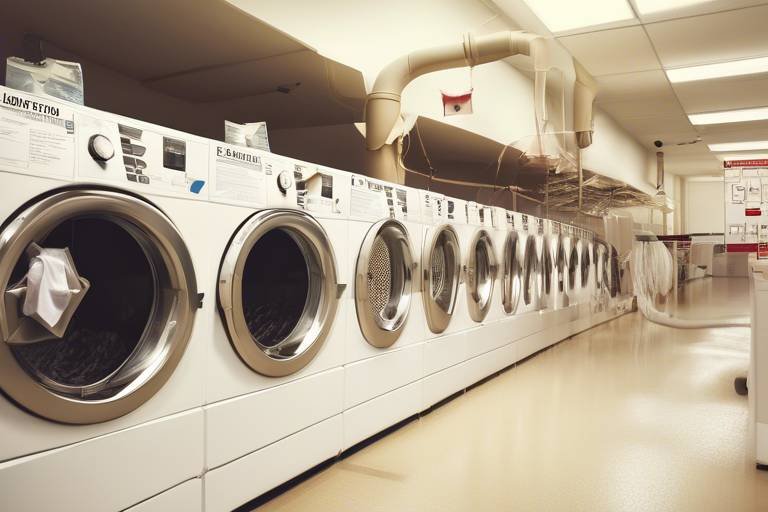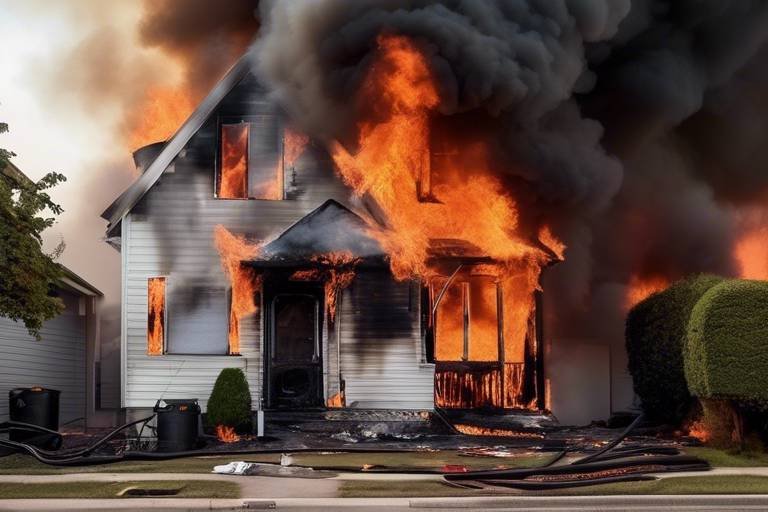Avoiding Hazards in Laundry Safety
Doing laundry might seem like a mundane chore, but it can be fraught with hidden dangers that many of us overlook. From slippery floors to hazardous chemicals, the laundry room can quickly turn into an accident waiting to happen. It's essential to be aware of these hazards and take proactive steps to ensure a safe laundry experience. After all, who wants to turn a simple task into a trip to the emergency room? By understanding the risks and implementing safety measures, you can transform your laundry routine into a safer, more efficient process.
Let's face it: laundry is a necessary evil in our lives. We all want fresh, clean clothes, but we often forget about the potential hazards lurking in our laundry rooms. Imagine stepping into your laundry space and immediately noticing the bright, colorful bottles of detergent lined up on the shelf. While they may look harmless, many of these products contain chemicals that can pose serious risks if not handled properly. It's not just about keeping your clothes clean; it's about keeping yourself and your loved ones safe. So, how can you avoid these hazards and create a safe laundry environment? Let's dive into some essential safety measures!
Recognizing potential hazards in laundry settings is crucial. Laundry rooms can be slippery due to spilled detergent or water, leading to slips and falls. Additionally, the presence of electrical appliances means that water and electricity can create dangerous situations if not managed properly. Moreover, laundry chemicals often carry warning labels, indicating that they can be harmful if ingested or improperly used. Understanding these risks is the first step in preventing accidents and injuries.
Using laundry machines safely is vital to prevent accidents. Always read the manufacturer’s instructions before operating any equipment. Regular maintenance checks can also prevent unexpected breakdowns that might lead to injuries. For instance, ensure that the washer and dryer are clean and free from lint buildup, which can pose a fire hazard. When you're loading the machines, avoid overloading them, as this can lead to malfunctions and potential injuries.
Electrical safety is paramount in laundry areas. Always check the cords of your machines for any signs of wear and tear. A frayed cord can lead to electrical shocks or fires, so it's best to replace any damaged cords immediately. Avoid overloading circuits by plugging too many devices into a single outlet, as this can cause overheating. Additionally, ensure that all appliances are properly grounded to prevent electrical mishaps.
Knowing how to spot faulty laundry equipment can prevent accidents. If your washer or dryer is making unusual noises, leaking water, or failing to operate correctly, it may be time to call in a professional for repairs. Ignoring these signs can lead to more significant issues down the line, including potential injuries. Always prioritize safety over convenience!
Proper loading techniques can minimize risks during operation. When loading a washer, distribute clothes evenly around the drum to prevent unbalanced loads that can cause the machine to shake or even tip over. For dryers, avoid cramming too many items in at once; this can lead to overheating and fire hazards. Remember, a little extra time spent loading your machines correctly can save you from a lot of trouble later.
Many laundry products contain hazardous chemicals. Always read labels carefully and follow the manufacturer’s instructions for use. It's essential to use protective gear, such as gloves or masks, when handling strong detergents or bleach. Store these chemicals in a safe place, away from children and pets, to prevent accidental exposure. By being mindful of how you handle and store these products, you can significantly reduce the risk of accidents.
A well-organized laundry space can enhance safety. Declutter your laundry area to minimize tripping hazards. Ensure that you have adequate lighting, as this can help you spot potential dangers more easily. Proper ventilation is also crucial, especially when using strong chemicals, to prevent the buildup of harmful fumes. A safe laundry environment not only protects you but also makes the task more enjoyable.
Being prepared for emergencies is crucial. Familiarize yourself with the emergency procedures specific to your laundry area. For example, know the location of fire extinguishers and how to use them. Having a first aid kit readily available can also be a lifesaver in case of minor injuries. Remember, the best way to handle an emergency is to be prepared for it!
Teaching family members about laundry safety can prevent accidents. Create a culture of awareness and responsibility regarding safe laundry practices. Discuss the importance of handling chemicals properly and the dangers of using appliances without supervision. By fostering an environment of safety, you not only protect yourself but also your loved ones. After all, teamwork makes the dream work, even in laundry!
- What are the most common hazards in laundry rooms? Slips, falls, electrical hazards, and exposure to harmful chemicals are among the most common risks.
- How can I make my laundry area safer? Keep the area clean and organized, ensure proper lighting and ventilation, and regularly maintain your machines.
- What should I do if I notice faulty equipment? Stop using the equipment immediately and contact a professional for repairs.
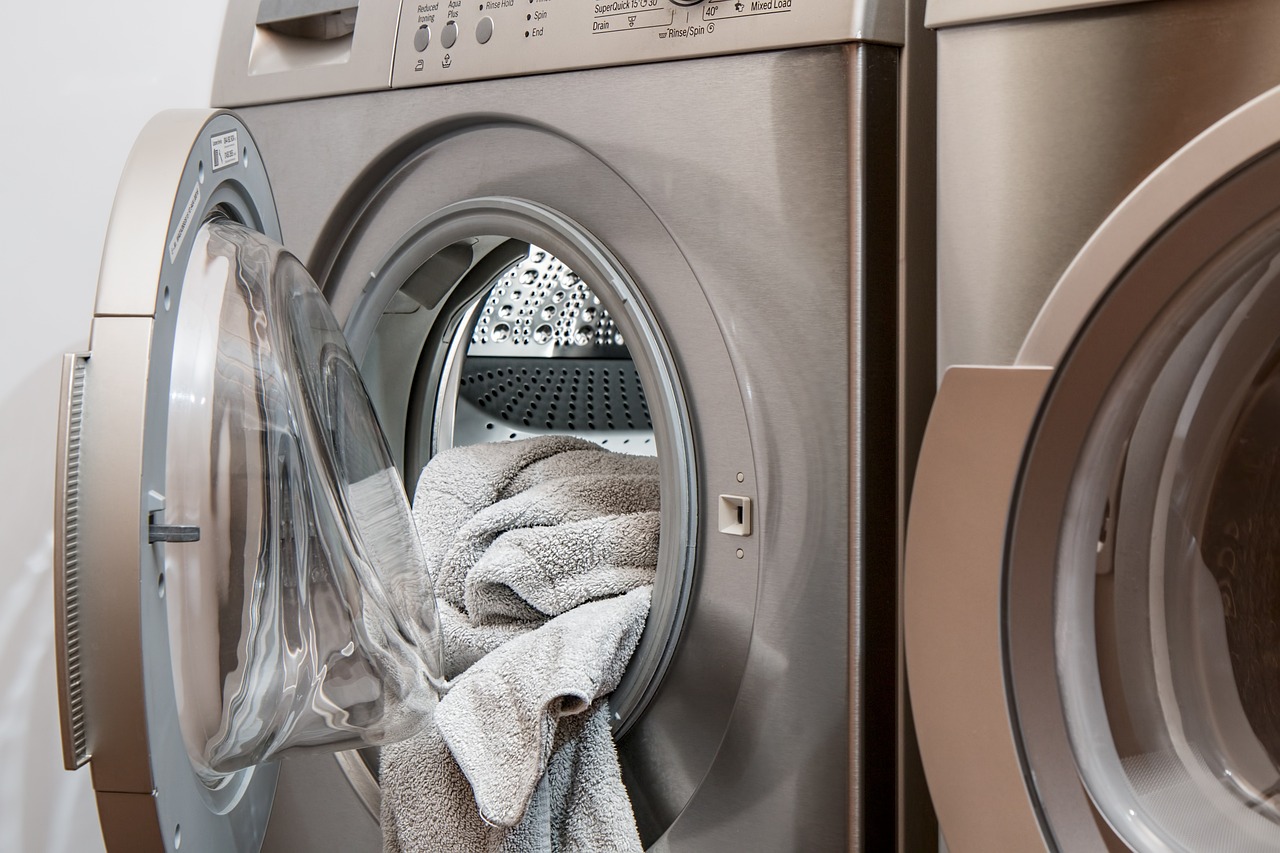
Understanding Laundry Hazards
When it comes to laundry, most people think of it as a mundane chore, but did you know that there are numerous hazards lurking in your laundry room? Understanding these potential risks is crucial for maintaining a safe environment. From slips and falls to chemical exposures, being aware of these dangers can help you take proactive measures to protect yourself and your family.
One of the most common hazards in laundry settings is the risk of slips and falls. Wet floors can be incredibly slippery, especially if you have a busy household where spills can happen frequently. Imagine rushing to grab that favorite shirt and suddenly finding yourself on the floor. It's not just embarrassing; it can lead to serious injuries. To combat this, always ensure that spills are cleaned up immediately and consider using non-slip mats in areas prone to moisture.
Another significant risk comes from the chemicals found in many laundry products. Detergents, bleach, and fabric softeners often contain harsh substances that can be harmful if inhaled or if they come into contact with your skin. Always read the labels carefully and follow the instructions. It’s advisable to wear gloves when handling these products and to keep them stored in a secure location away from children and pets. If you're ever in doubt about a product, don't hesitate to research it or consult safety data sheets for more information.
Additionally, laundry rooms can sometimes become cluttered with items that don’t belong there, creating a hazardous environment. Think about it: a pile of clothes on the floor can easily become a tripping hazard. It’s essential to keep your laundry area organized. Regularly decluttering and ensuring that only necessary items are within reach can significantly reduce the risk of accidents. Make it a habit to check your laundry area for any potential hazards before starting your laundry tasks.
In summary, being aware of the various hazards in your laundry environment is the first step toward creating a safe space. By taking simple precautions—like cleaning up spills, using chemicals responsibly, and maintaining an organized area—you can significantly reduce the risk of accidents. So, next time you head to do laundry, keep these hazards in mind and take steps to ensure your safety!
- What should I do if I spill laundry detergent? Clean it up immediately with a dry cloth to prevent slips.
- How can I safely store laundry chemicals? Keep them in a locked cabinet or on a high shelf out of reach of children.
- What are the signs of faulty laundry equipment? Look for unusual noises, leaks, or failure to start.
- How often should I clean my laundry area? It's a good idea to clean and declutter at least once a month.
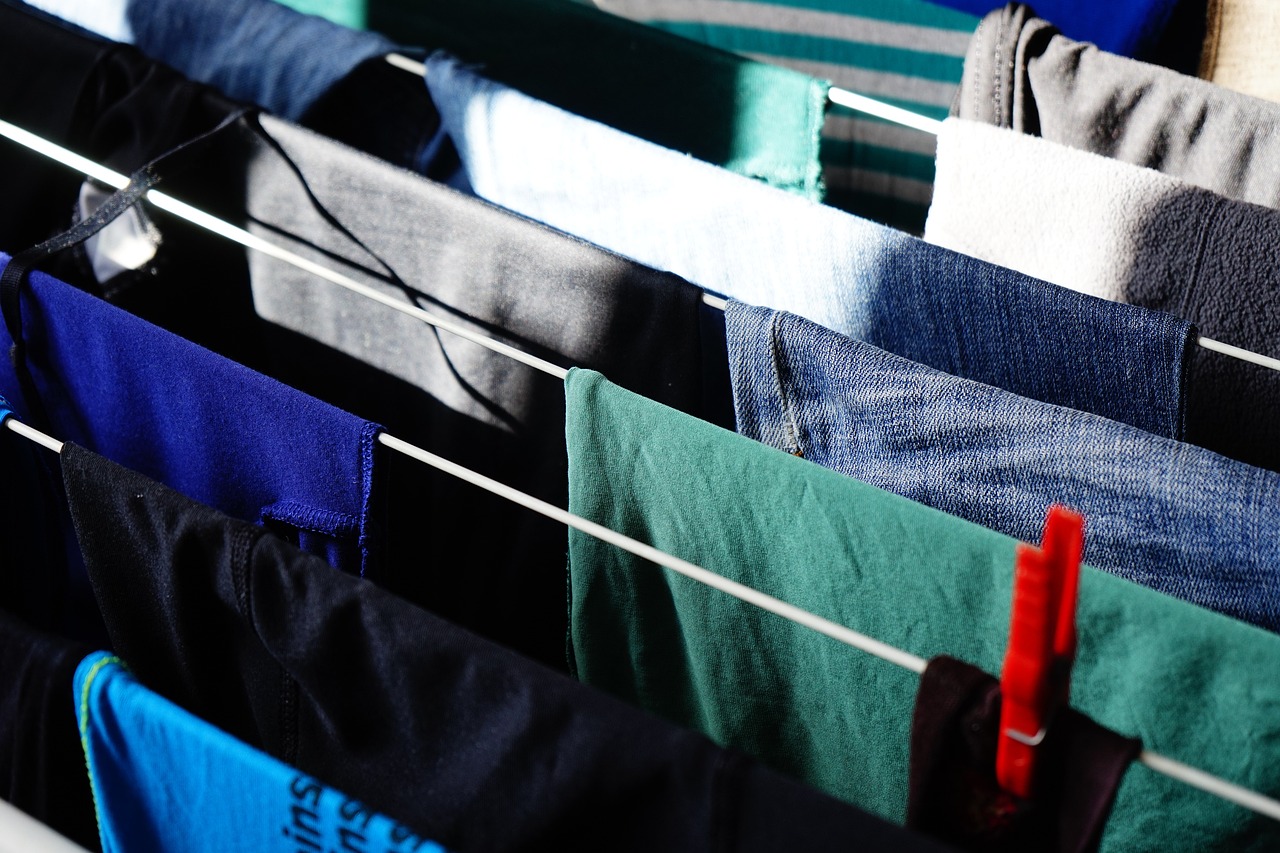
Proper Use of Laundry Equipment
Using laundry machines safely is more than just a good practice; it's essential for preventing accidents and ensuring that your laundry tasks are executed smoothly. Whether you're a seasoned laundry pro or a newbie just getting the hang of it, understanding the proper use of laundry equipment can make a world of difference. Imagine trying to navigate a minefield without knowing where the bombs are—laundry equipment can be just as tricky if you don't know the potential pitfalls!
First and foremost, always read the user manual that comes with your washing machine and dryer. Each model has its quirks and features, and familiarizing yourself with them can save you from a lot of headaches. For instance, did you know that overloading your washing machine can lead to not just poor cleaning results but also damage to the machine? It's like trying to fit a square peg in a round hole—things just won’t work out as intended!
Another critical aspect is regular maintenance. Just like a car needs oil changes, your laundry machines require attention too. Here are a few maintenance tips to keep your equipment running smoothly:
- Clean the lint filter in your dryer after every load to prevent fires and ensure efficient drying.
- Check hoses for leaks or wear and tear, replacing them as necessary to avoid water damage.
- Run a cleaning cycle on your washing machine monthly to eliminate detergent buildup and odors.
When it comes to operating your machines, always follow the safety protocols. This includes ensuring that your hands are dry when using any controls, as moisture can lead to electrical hazards. Additionally, avoid using extension cords with your machines. It’s tempting to stretch a cord to reach an outlet, but this practice can lead to overheating and potential fires. Instead, make sure your laundry area has accessible outlets that can handle the electrical load.
Speaking of electrical safety, it’s paramount in laundry areas. Always check the cords for any signs of damage before plugging in your appliances. If you notice fraying or exposed wires, it’s best to replace the cord or the appliance altogether. Moreover, never overload circuits; each outlet has a maximum load it can handle, and exceeding that can lead to tripped breakers or worse—fire hazards. Ensuring that appliances are properly grounded is another crucial step in preventing electrical accidents.
Knowing how to spot faulty laundry equipment can save you from potential disasters. Look out for signs of malfunction, such as unusual noises, leaks, or failure to start. If your washing machine is shaking violently during a spin cycle, it could be a sign of an unbalanced load or a more serious issue. In such cases, it’s best to consult a professional rather than attempting repairs yourself.
Proper loading techniques can significantly minimize risks during operation. For washing machines, make sure to distribute clothes evenly around the drum to prevent imbalance. In dryers, avoid cramming too many items in at once, as this can lead to overheating and inefficient drying. Think of it like packing a suitcase; you want to maximize space but also ensure that everything fits comfortably without straining the seams!
In conclusion, using laundry equipment properly is all about being informed and proactive. By adhering to safety protocols, maintaining your machines, and recognizing signs of malfunction, you can create a safer laundry environment for yourself and your family. Remember, a little bit of care goes a long way in avoiding laundry mishaps!
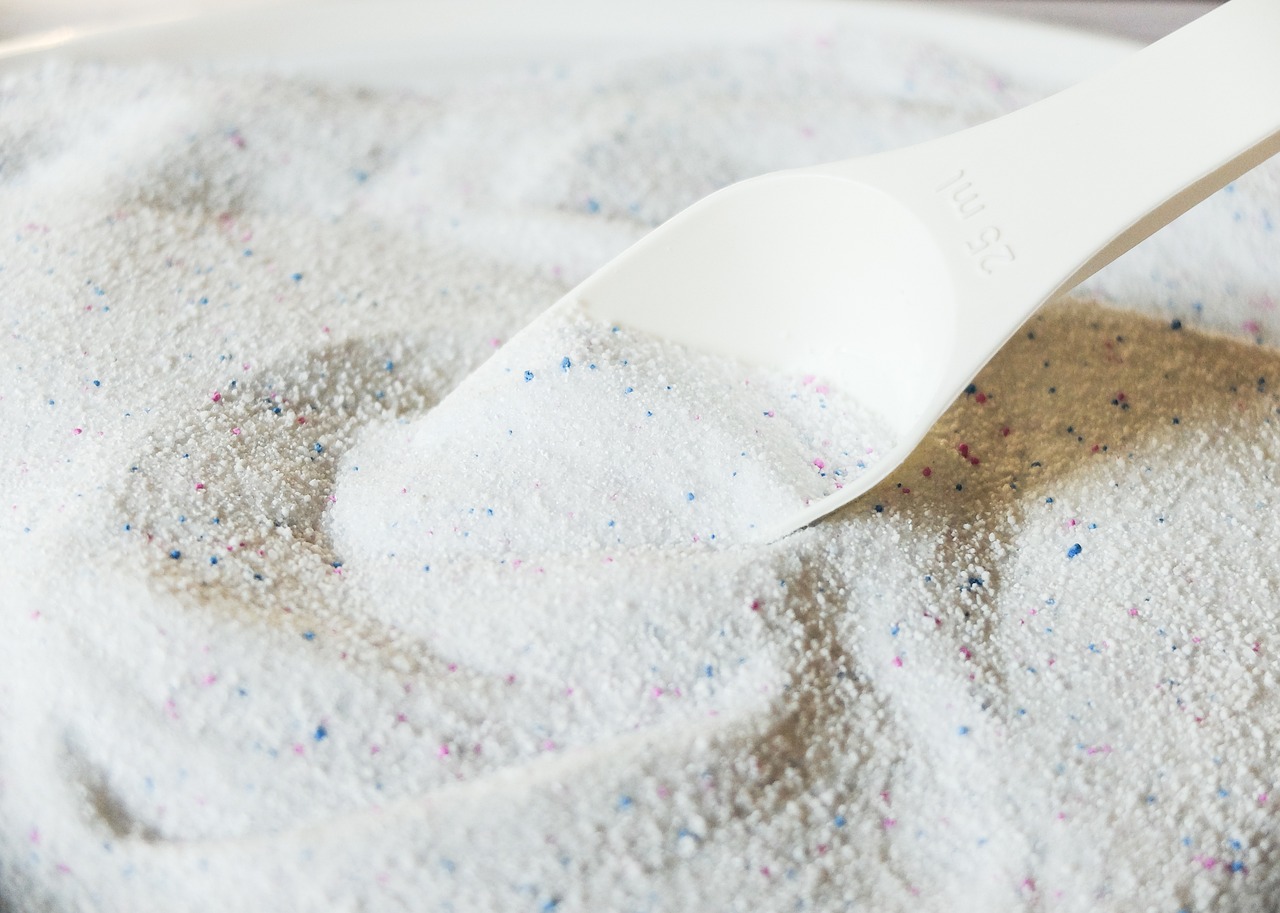
Preventing Electrical Hazards
When it comes to laundry safety, one of the most critical areas to consider is electrical hazards. Imagine the chaos that could ensue if a simple oversight leads to an electrical mishap! To prevent such scenarios, it’s essential to adopt a proactive approach to electrical safety in your laundry area. Start by regularly inspecting your appliances and their power cords. Look for any signs of wear and tear, such as fraying wires or exposed conductors. If you notice any damage, it’s time to replace the cord or, better yet, the entire appliance. Remember, a small crack can lead to a shocking experience!
Next, ensure that you are not overloading your circuits. It might be tempting to plug multiple devices into a single outlet, especially in a bustling laundry room, but this can lead to overheating and potential fires. Instead, consider using a power strip with surge protection, which can provide a safer alternative for your appliances. Always check the manufacturer's recommendations for electrical load limits, and never exceed them. A little caution can go a long way in keeping your laundry area safe.
Another important aspect is grounding your appliances correctly. Grounding is like having a safety net; it provides a pathway for electricity to follow in case of a fault. Make sure that your washer and dryer are plugged into properly grounded outlets. If you’re unsure about the grounding status of your outlets, it’s wise to consult a qualified electrician. They can assess your electrical system and ensure everything is up to code, giving you peace of mind while you tackle your laundry tasks.
Also, be aware of water and electrical connections. Water and electricity are a dangerous combination, and laundry areas are often prone to spills. Always ensure that your appliances are placed in a way that minimizes the risk of water exposure to electrical components. If you notice any leaks, fix them immediately to avoid creating a hazardous environment. Remember, a small puddle can lead to a big problem!
Finally, consider installing GFCI (Ground Fault Circuit Interrupter) outlets in your laundry room. These outlets automatically cut off power when they detect an imbalance in electrical current, which can occur when water is present. This simple addition can significantly reduce the risk of electrical shock. In summary, maintaining electrical safety in your laundry room involves:
- Regularly inspecting cords and appliances for damage.
- Avoiding overloading circuits with multiple devices.
- Ensuring proper grounding of all appliances.
- Keeping water away from electrical connections.
- Installing GFCI outlets for added protection.
By following these guidelines, you can create a safer laundry environment for yourself and your family. Remember, safety is not just a checklist; it’s a mindset. Stay vigilant and proactive, and your laundry days will be as smooth as freshly washed linens!

Identifying Faulty Equipment
When it comes to laundry safety, one of the most critical aspects is . Just like a car that makes strange noises, your laundry machines can give you signs that something isn’t quite right. Ignoring these signs can lead to not only inconvenience but also serious accidents. So, how do you know when your washer or dryer is on the fritz? First, pay attention to any unusual sounds. If your machine is clanking, grinding, or making high-pitched squeals, it’s time to investigate further. These noises may indicate loose parts, worn-out bearings, or even a malfunctioning motor.
Another red flag is leaking water. If you notice puddles forming around your washer or dryer, it could mean that hoses are damaged or connections are loose. Not only is this a sign of potential equipment failure, but it also poses a significant slip hazard. Additionally, keep an eye out for burning smells or excessive heat emanating from your appliances. This could indicate electrical issues, which can be extremely dangerous. In such cases, it’s best to unplug the machine and call a professional.
Furthermore, if your laundry isn’t coming out clean or dry, it may be time to reassess your equipment. A washer that fails to agitate properly or a dryer that doesn’t heat up can signal that internal components are malfunctioning. Regular maintenance checks can help you catch these issues early. You might want to consider setting a monthly maintenance schedule to inspect hoses, belts, and other components for wear and tear.
Here are some key indicators to help you spot faulty laundry equipment:
- Unusual Noises: Listen for clanking, grinding, or squealing sounds.
- Water Leaks: Check for puddles around your machines.
- Burning Smells: Be cautious of any unusual odors.
- Poor Performance: Look out for clothes that aren't clean or dry.
Ultimately, being proactive about identifying issues with your laundry equipment can save you time, money, and potential injuries. If you notice any of these warning signs, don’t hesitate to consult a professional technician. They can diagnose the problem and recommend whether a repair or replacement is necessary. Remember, a little attention to detail can go a long way in ensuring your laundry experience is safe and efficient.
Q: How often should I check my laundry equipment for faults?
A: It’s advisable to perform a visual inspection of your laundry equipment at least once a month. Look for signs of wear, leaks, or unusual noises.
Q: What should I do if I notice a problem with my machine?
A: If you notice any signs of malfunction, unplug the machine immediately and consult a professional technician for further assessment and repairs.
Q: Can I fix faulty equipment myself?
A: While some minor issues can be addressed by homeowners, it’s best to leave significant repairs to professionals to avoid injury or further damage.

Safe Loading Techniques
When it comes to laundry, loading your washer and dryer correctly is crucial for both safety and efficiency. Imagine trying to fit a square peg into a round hole; that's what happens when you overload your machines. Not only does this put unnecessary strain on the equipment, but it can also lead to accidents, such as the machine tipping over or items getting stuck in the door. So, how can you ensure you're loading your laundry safely? Let's dive into some practical tips!
First and foremost, it's essential to understand the capacity of your machines. Most washers and dryers come with a specified load capacity, usually indicated in pounds or kilograms. Adhering to this guideline is not just a suggestion but a safety measure. Overloading can cause the machine to become unbalanced, leading to vibrations that could damage the appliance or even cause it to move unexpectedly. Always refer to your user manual for specific loading instructions.
Next, consider the type of items you’re washing. Mixing heavy items like towels with lighter ones can create an imbalance during the spin cycle. This imbalance can cause the machine to shake violently, which is not just annoying but can also be dangerous. To avoid this, try to load similar weights together. For example, wash all your towels in one load and your lighter clothes in another. This not only promotes safety but also enhances the cleaning efficiency of your laundry.
Another key point is to distribute the load evenly. When loading your washer, place larger items around the drum and smaller items in between. This helps maintain balance during the spin cycle. Think of it like packing a suitcase; if you cram all your heavy shoes on one side, it’s going to topple over when you try to lift it. Similarly, an uneven load can lead to damage and safety hazards.
Also, don’t forget about the importance of leaving space. Your clothes need room to move around to get cleaned effectively. A good rule of thumb is to leave about an inch of space at the top of the drum. This not only helps with cleaning but also prevents clothes from getting tangled or stuck, which can lead to potential injuries when you try to remove them.
Finally, always check for any foreign objects before loading your machines. Items like coins, keys, or even small toys can cause significant damage to both your laundry and the machines themselves. A simple visual inspection can save you from costly repairs and potential hazards. If you find anything, remove it before starting your laundry.
In summary, safe loading techniques are not just about fitting clothes into your machines; they are about ensuring a smooth, efficient, and safe laundry experience. By understanding your machine's capacity, balancing your loads, and keeping an eye out for foreign objects, you can significantly reduce the risk of accidents and extend the life of your appliances.
- What is the maximum load capacity for my washer?
Check your user manual for specific details regarding your model’s capacity. - Can I wash heavy items like blankets with lighter clothes?
It's best to wash heavy and light items separately to avoid imbalance. - How can I tell if my load is balanced?
Listen for unusual noises during the spin cycle; if the machine shakes or makes loud noises, it may be unbalanced. - What should I do if I find foreign objects in my laundry?
Remove them immediately to prevent damage to your machine and your clothes.

Handling Laundry Chemicals Safely
When it comes to laundry, we often think about the clothes we’re washing, but what about the chemicals we use to get them clean? Many laundry products contain hazardous substances that can pose serious risks if not handled properly. It’s crucial to treat these chemicals with the respect they deserve, ensuring both your safety and the safety of those around you. Have you ever stopped to read the labels on your laundry detergent? You might be surprised by what you find!
First and foremost, always read the labels on laundry products before use. These labels provide essential information about the chemicals contained within and any associated hazards. Look for warnings such as "flammable," "corrosive," or "toxic." Understanding these warnings can help you avoid accidents and injuries. For instance, did you know that mixing certain cleaning agents can create dangerous gases? It’s like a science experiment gone wrong in your laundry room!
Next, consider using protective gear when handling laundry chemicals. Gloves are a must, especially if you have sensitive skin or are using strong detergents or stain removers. Additionally, wearing goggles can protect your eyes from splashes. Imagine pouring a strong bleach solution without any protection—yikes! You wouldn't want to end up with irritated skin or worse, a trip to the emergency room.
Storage is another critical aspect of laundry chemical safety. Always store these products in their original containers, complete with labels. This not only helps you identify them easily but also prevents accidental misuse. Keep them out of reach of children and pets; a locked cabinet is a great idea. Think of it like keeping the cookies on the top shelf—if they can’t see them, they can’t get into trouble!
In addition to proper storage, ensure that your laundry area is well-ventilated. Many laundry products release fumes that can be harmful if inhaled in large quantities. Open windows or use fans to keep the air circulating. It's like giving your laundry room a breath of fresh air! Not only does this keep the area safe, but it also makes it a more pleasant space to work in.
Finally, always dispose of laundry chemicals properly. Never pour them down the drain unless the label specifically states it's safe to do so. Instead, check your local regulations on hazardous waste disposal. Think of it as a way to keep your community clean and safe—after all, nobody wants to deal with pollution caused by improper disposal of cleaning agents!
In summary, handling laundry chemicals safely involves being informed, prepared, and proactive. By following these guidelines, you can ensure that your laundry routine remains safe and effective. Remember, safety starts with you!
- What should I do if I accidentally mix laundry chemicals? - Immediately ventilate the area and seek fresh air. If you experience any adverse reactions, contact emergency services or a poison control center.
- How can I tell if a laundry chemical is safe for my family? - Always read the label for safety warnings and look for products labeled as non-toxic or eco-friendly.
- Is it safe to use laundry chemicals in a small, enclosed space? - Not without proper ventilation. Always ensure good airflow when using these products to avoid inhaling harmful fumes.
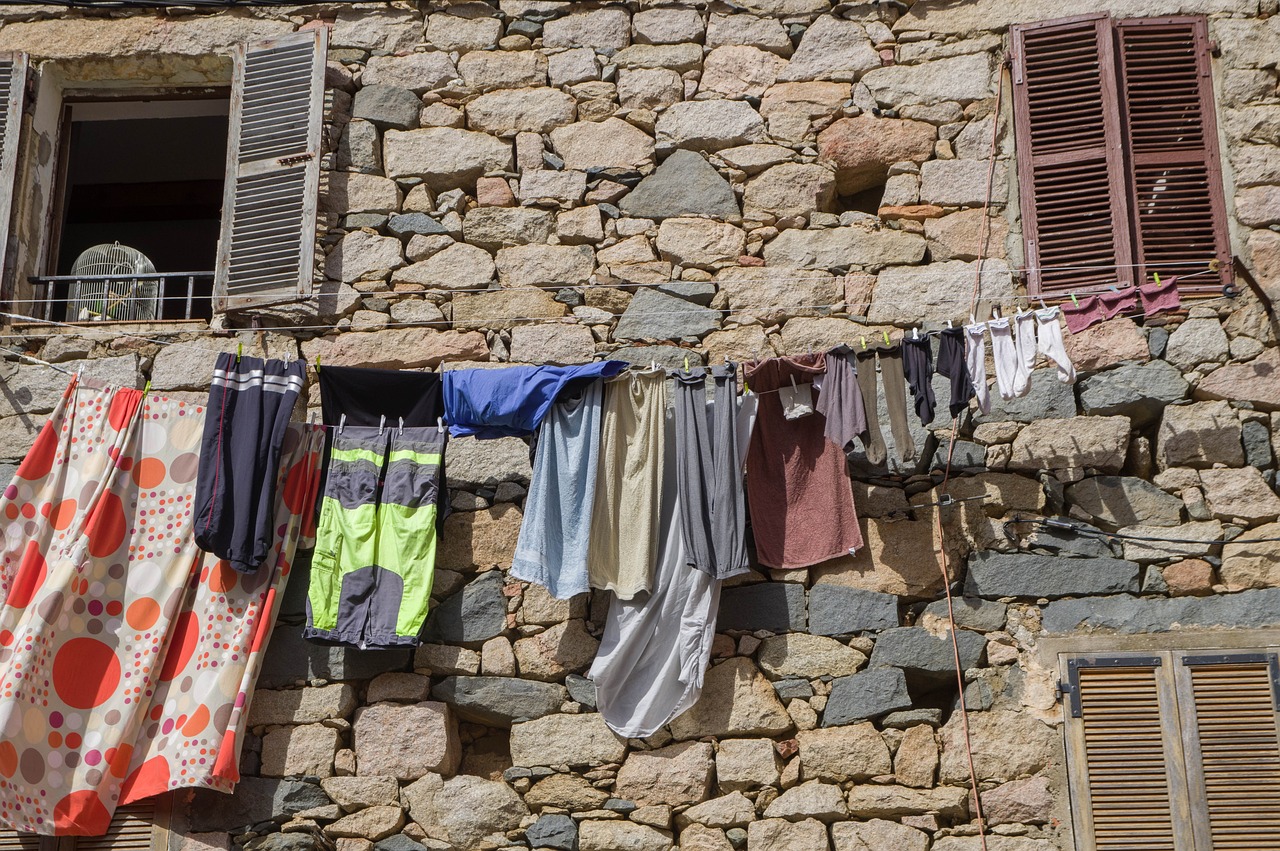
Creating a Safe Laundry Environment
When it comes to laundry, we often think about the clothes we wash and the detergent we use, but have you ever considered the environment in which you do your laundry? A well-organized and safe laundry space can significantly reduce the risk of accidents and injuries. Imagine stepping into a laundry room where everything is in its place, the air is fresh, and the lighting is just right. Sounds nice, right? But how do we achieve that?
First and foremost, decluttering is essential. A cluttered space can be a recipe for disaster. It can lead to trips and falls, especially when you're carrying a heavy basket of clothes. Take a moment to look around your laundry area. Are there items that don’t belong? Consider implementing a regular cleaning schedule to keep your laundry room tidy. You could even set up a laundry checklist to remind yourself of what needs to be done weekly. By keeping the space organized, you not only enhance safety but also make the process of doing laundry more enjoyable.
Another crucial aspect is ventilation. Proper airflow in your laundry area helps prevent the buildup of moisture, which can lead to mold and mildew. Not only is it unpleasant, but it can also pose health risks. If your laundry room lacks windows, consider installing a small fan or a dehumidifier. This simple step can make a world of difference. A well-ventilated space is not just safer; it also helps keep your laundry smelling fresh!
Lighting is another critical factor in creating a safe laundry environment. Poor lighting can hide potential hazards and make it difficult to operate machines safely. Ensure that your laundry room is well-lit, especially around areas where you load and unload clothes. Consider using bright LED bulbs that provide ample light. If your laundry area has any dark corners, think about adding a small lamp or motion-sensor lights to illuminate those spots. After all, who wants to fumble around in the dark when they’re trying to sort laundry?
Now, let’s talk about the storage of laundry products. Many laundry detergents and fabric softeners contain chemicals that can be hazardous if misused. Always store these products out of reach of children and pets. A locked cabinet can be a great solution. Additionally, make sure to read the labels and follow the safety instructions provided. This way, you can avoid any accidental spills or misuse of products that could lead to injuries.
Finally, it’s important to have a plan in case of emergencies. Accidents can happen, even in the safest environments. Equip your laundry room with a basic first aid kit and know the location of your fire extinguisher. In the event of a fire, remember that water is not always the best solution, especially if electrical appliances are involved. Familiarize yourself with the emergency procedures relevant to your laundry area. Being prepared can make all the difference in a critical situation.
In conclusion, creating a safe laundry environment is not just about aesthetics; it’s about ensuring that your laundry tasks are performed without unnecessary risks. By focusing on decluttering, ventilation, lighting, proper storage, and emergency preparedness, you can transform your laundry space into a haven of safety. So, take a moment to assess your laundry area today. Are there improvements you can make? Your future self will thank you!
- What are the most common hazards in a laundry room? Slips, trips, falls, and chemical exposure are among the most common hazards.
- How can I ensure my laundry area is well-ventilated? Open windows, use exhaust fans, or dehumidifiers to improve airflow.
- What should I do if I notice faulty equipment? Stop using the appliance immediately and contact a professional for repairs.
- How can I educate my family about laundry safety? Discuss safety measures regularly and involve them in laundry tasks to foster awareness.
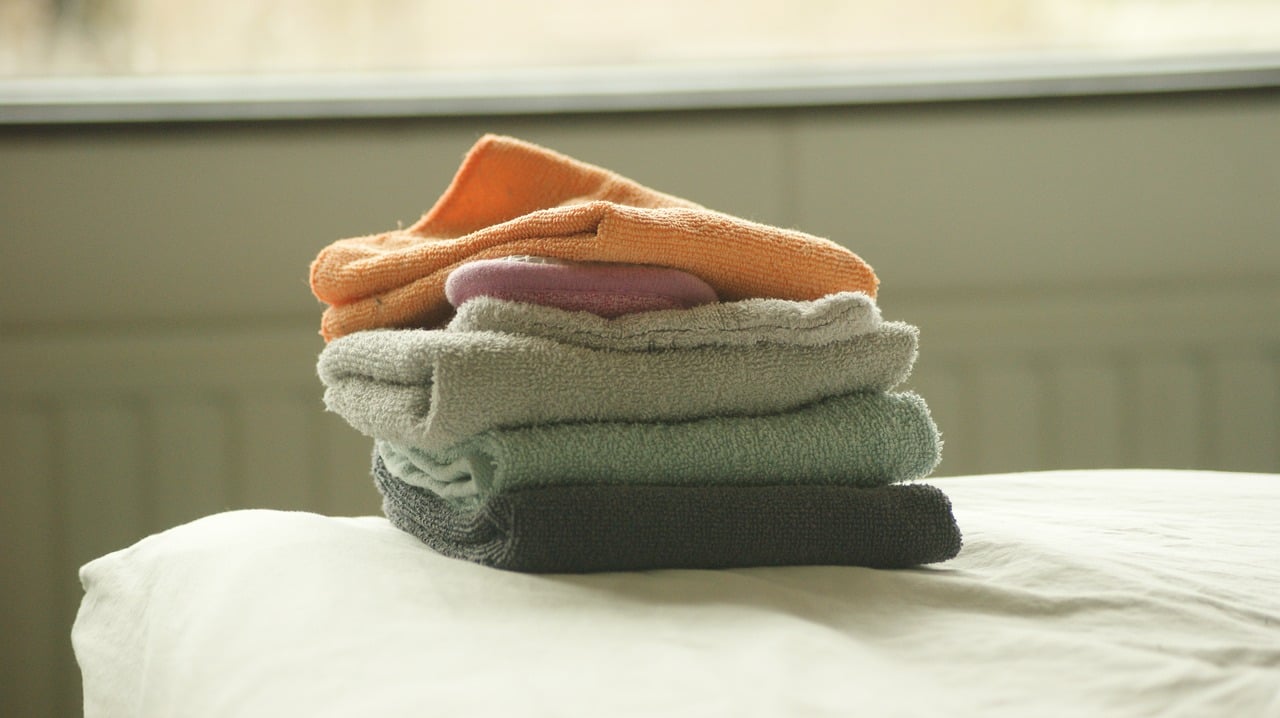
Emergency Preparedness in Laundry Areas
When it comes to laundry safety, being prepared for emergencies is not just a good idea—it's essential. Imagine this: you're in the middle of a laundry day marathon, and suddenly, you smell something burning. Panic sets in, but what if you had a plan? Having a well-thought-out emergency preparedness strategy can make all the difference in keeping your home and loved ones safe.
First and foremost, understanding the potential emergencies that could arise in laundry areas is crucial. From electrical fires caused by faulty machines to chemical spills that can lead to hazardous situations, being aware of these risks can help you stay one step ahead. To mitigate these dangers, ensure that your laundry area is equipped with the necessary safety tools. For instance, a fire extinguisher should always be within reach, and smoke detectors should be installed and regularly checked.
In the event of a fire, knowing how to respond quickly can save lives and property. Here’s what you should do:
- Stay Calm: Panic can lead to poor decision-making. Take a deep breath.
- Evacuate: Get everyone out of the house immediately.
- Call for Help: Dial emergency services once you’re in a safe location.
- Do Not Attempt to Fight the Fire: Only use a fire extinguisher if the fire is small and manageable.
Furthermore, it’s essential to have a first aid kit readily available in your laundry area. Accidents can happen, whether it's a small cut from a laundry basket or a chemical exposure. Your first aid kit should include:
- Adhesive bandages
- Antiseptic wipes
- Burn cream
- Disposable gloves
Regularly check and replenish your first aid supplies to ensure they are ready for use when needed. Additionally, consider conducting a fire drill with your family, so everyone knows the escape routes and what to do in case of an emergency. This practice can greatly reduce confusion and fear during a real emergency.
Another critical aspect of emergency preparedness is knowing how to handle chemical spills. Many laundry products contain hazardous substances that require careful handling. If a spill occurs, immediately follow these steps:
- Evacuate the area to avoid inhaling fumes.
- Wear protective gear such as gloves and masks before attempting to clean up.
- Use absorbent materials to soak up the spill, and dispose of them according to local regulations.
Finally, educating your family members about these procedures is vital. Everyone should know how to react in an emergency, from the youngest to the oldest. Regular discussions about safety protocols can empower your family to take responsibility and act swiftly when it matters most.
In conclusion, being prepared for emergencies in your laundry area is not just about having the right tools; it's about fostering a culture of safety and awareness. By implementing these strategies, you can ensure that your laundry tasks remain safe and stress-free, allowing you to focus on more enjoyable aspects of life.
Q: What should I do if I notice smoke coming from my dryer?
A: Immediately turn off the dryer, unplug it, and evacuate the area. Call emergency services to handle the situation.
Q: How often should I check my smoke detectors in the laundry area?
A: It's best to check your smoke detectors monthly and replace the batteries at least once a year.
Q: Are there specific laundry chemicals that are more hazardous than others?
A: Yes, bleach and certain stain removers can be particularly hazardous. Always read labels and follow safety instructions.
Q: How can I educate my children about laundry safety?
A: Involve them in laundry tasks while explaining the importance of safety. Use simple language and demonstrate safe practices.
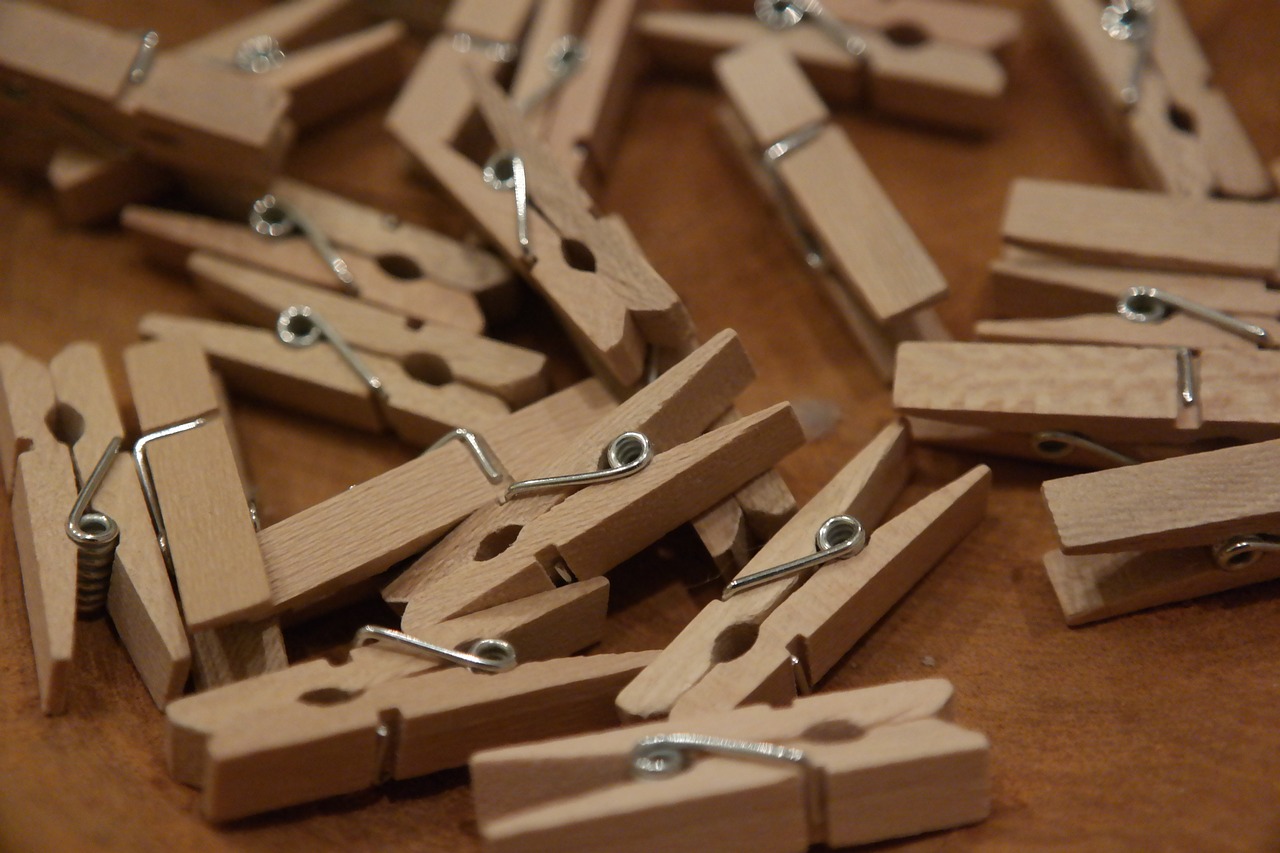
Educating Family Members on Laundry Safety
When it comes to laundry safety, education is key! Think of your laundry room as a mini-laboratory where various chemicals and machines come together. Just like in any lab, understanding how to handle the materials and equipment safely can prevent accidents and injuries. It's essential to foster a culture of safety within your household, especially if you have children or other family members who may not be familiar with the potential hazards.
Start by engaging your family members in a conversation about the importance of laundry safety. Use relatable scenarios to illustrate your points. For instance, you might say, "Imagine if you accidentally spilled bleach on the floor—what could happen?" This approach not only makes the topic more relatable but also encourages them to think critically about safety practices. You can even create a fun family challenge where everyone shares their best laundry safety tips, turning a serious subject into an engaging discussion.
One effective way to educate your family is by establishing safety rules for laundry tasks. Here are some key rules you might consider:
- Read Labels: Always check the labels on laundry products. Understanding what you're using is crucial to avoid mishaps.
- Wear Protective Gear: Encourage the use of gloves when handling harsh chemicals to protect skin from irritation.
- Report Problems: If any equipment seems faulty, make sure everyone knows to report it immediately instead of trying to fix it themselves.
Additionally, consider creating a visual guide or checklist that outlines safe laundry practices. You can display this guide in your laundry room as a constant reminder. Make it colorful and engaging—perhaps even include fun illustrations to capture attention. This way, even the younger members of your family can easily understand and follow the safety protocols.
Another vital aspect is hands-on training. If you have family members who are new to handling laundry tasks, take the time to walk them through the entire process. Show them how to load the washer safely, explain the significance of not overloading machines, and demonstrate how to correctly measure and use laundry detergents. By providing this practical experience, you empower them with the knowledge they need to operate safely.
Lastly, make it a routine to discuss laundry safety during family meetings or gatherings. Keeping the conversation going ensures that safety remains a priority in your household. By actively involving everyone in discussions about laundry safety, you not only educate them but also create a supportive environment where everyone feels responsible for maintaining a safe laundry space.
Q: What are the most common laundry accidents?
A: Common laundry accidents include slips and falls due to wet floors, exposure to harmful chemicals, and injuries from mishandling equipment.
Q: How can I make laundry safer for my kids?
A: Educate them on the dangers, supervise them during laundry tasks, and ensure that all hazardous materials are stored out of reach.
Q: What should I do if I notice a malfunctioning machine?
A: Stop using the machine immediately, unplug it, and report the issue to someone who can handle repairs.
Frequently Asked Questions
- What are the most common hazards in laundry environments?
Common hazards in laundry settings include slips and falls due to wet floors, exposure to hazardous chemicals found in detergents and fabric softeners, and electrical hazards from faulty equipment. It's crucial to be aware of these risks to maintain a safe laundry space.
- How can I safely operate my washing machine and dryer?
To safely operate your washing machine and dryer, always read the manufacturer’s instructions, avoid overloading the machines, and ensure that the cords are in good condition. Regular maintenance checks can also help prevent accidents.
- What should I check for to identify faulty laundry equipment?
Signs of faulty laundry equipment include unusual noises, leaks, or failure to start. If you notice any of these issues, it’s best to stop using the appliance and consult a professional technician for repairs.
- How can I prevent electrical hazards in my laundry area?
Prevent electrical hazards by checking cords for frays or damage, avoiding overloading electrical outlets, and ensuring that all appliances are properly grounded. Regularly inspect your laundry area for potential electrical risks.
- What safety measures should I take when using laundry chemicals?
Always read the labels on laundry chemicals, use protective gear like gloves and masks, and store these products out of reach of children. Proper ventilation is also important to avoid inhaling harmful fumes.
- How can I create a safe laundry environment?
To create a safe laundry environment, keep the area well-organized and clutter-free, ensure proper lighting, and maintain good ventilation. This helps to reduce the risk of accidents and improves overall safety.
- What emergency procedures should I have in place for my laundry area?
Having emergency procedures in place includes knowing how to respond to fires, having a fire extinguisher accessible, and being familiar with first aid for potential injuries. Regular drills can help keep everyone prepared.
- How can I educate my family about laundry safety?
Educate your family about laundry safety by discussing the potential hazards and demonstrating safe practices. Encourage everyone to take responsibility for maintaining a safe laundry environment.

